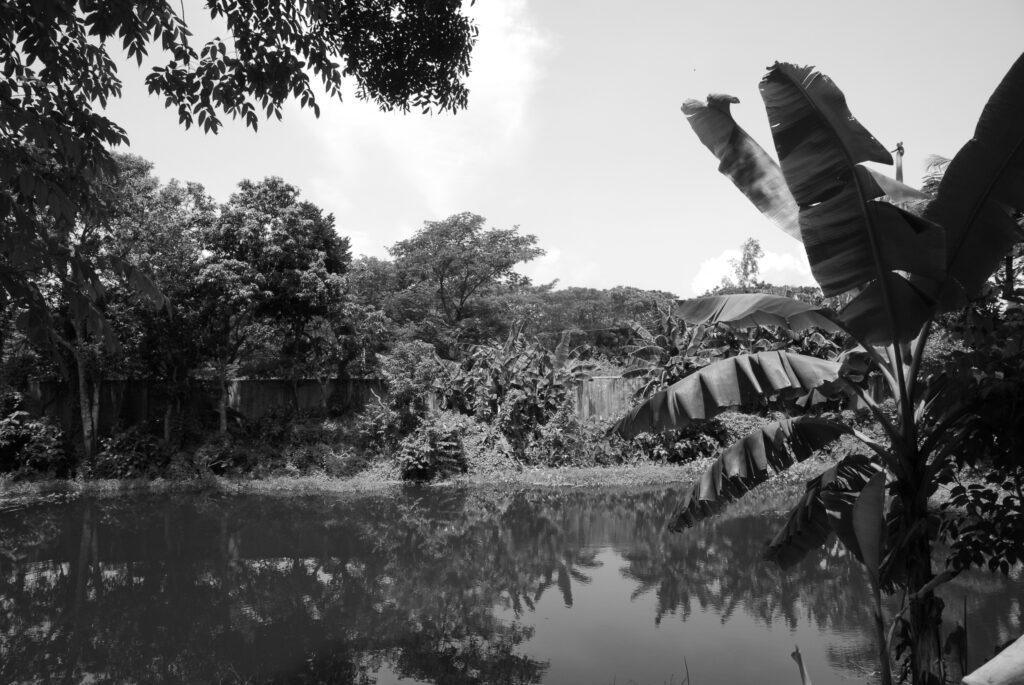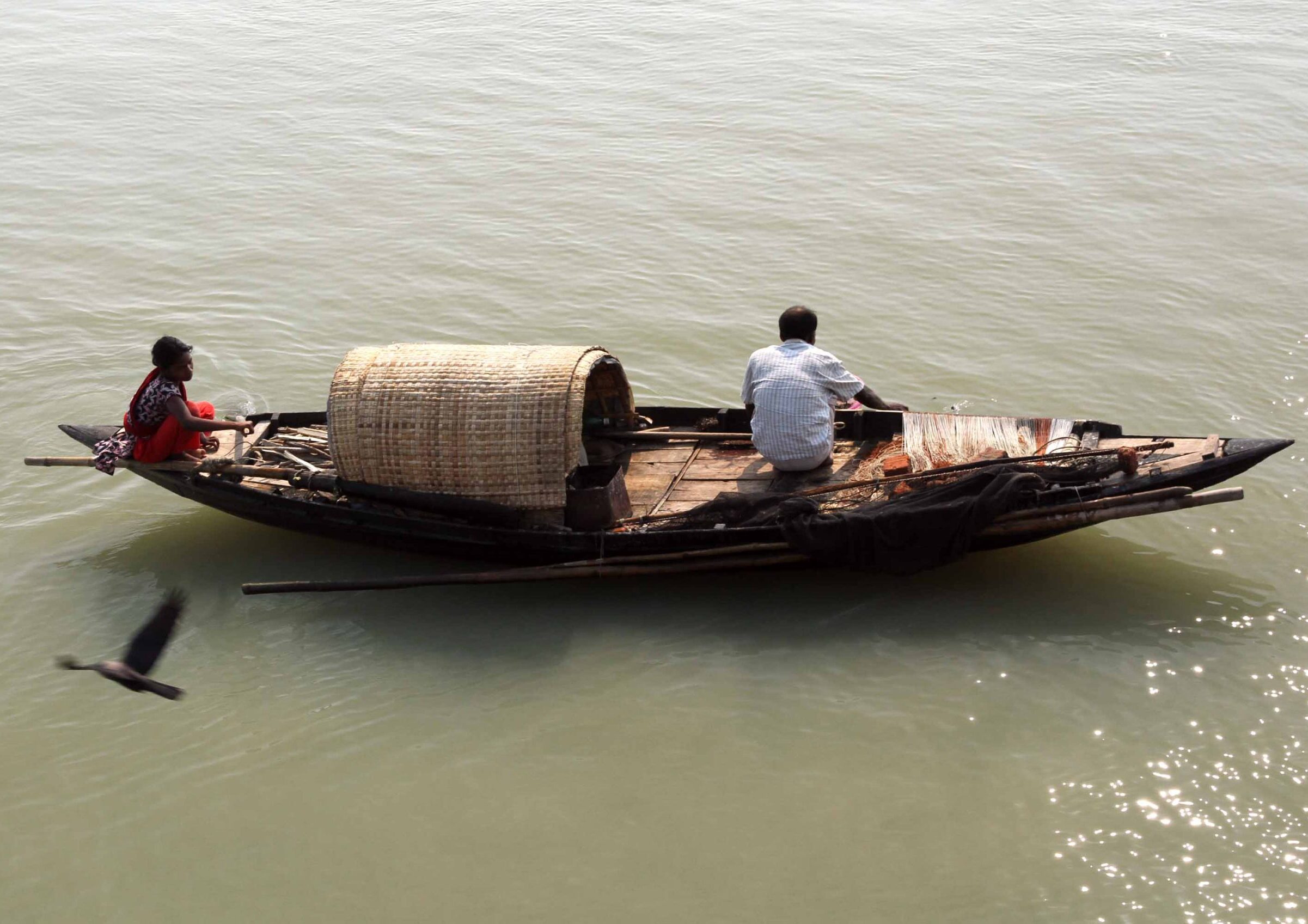4 July 2020

This is the pond that I discuss in the blog
Since coming to London at the age of ten in the early 1970s, I have had no direct experience of snakes. Unlike when I was a child in Bangladesh, the several times I saw these dreaded reptiles were through glass barriers at London Zoo. Although seeing snakes instinctively generated fear, I always managed to deal with them through applying inherited practical knowledge of how to live safely with snakes when I was in Bangladesh and later in London, knowing that safety glasses created glass barriers at the zoo.
I was born in a small Bangladeshi village in the early 1960s, situated about twenty-five miles northeast of Dhaka city, the capital of Bangladesh. While growing up, I became aware that my village was considered more important than other nearby villages. It was because it had two famous historical 1920s/1930s built institutions: an orphanage and a madrassa (Muslim educational seminary).
I have no memory of the exact moment in my life when I first saw a snake or became aware of its potential dangers. However, snakes were part of our everyday life, and nearly everybody in the village talked about snakes and did so quite frequently. They conversed about how the danger they pose to human beings increased and decreased with the season. The flooding period was the most dangerous time for snake-human encounters as many snakes seek out dryer places to escape from the dangers they face from excessive waters. Fanciful and exaggerated stories of snakes were plentiful in both children to children conversations and exchanges between children and adults.
I saw many types of relatively small-sized snakes in my village. They seemed to be everywhere; the non-venomous type frightened us less. Snakes were often seen moving on the ground along our housing compound’s inner northern brick wall and occasionally entered our houses; this required the assistance of experienced people to flush them out.
Although I knew the local names of different snakes, I no longer remember them. Nevertheless, most people in the village regularly shared tales of snake encounters – including fatal ones – and many adults told factual and fanciful stories to children to illustrate or impart knowledge of how to keep safe from any encounters. Although the snakes in our village were relatively small in size, our imagination and fears were amplified by being informed of large ojogors (pythons) elsewhere that could even swallow goats and of the incredible venomous powers of the cobra. These were hard to imagine as neither large pythons nor cobras lived anywhere near our region.
Overall, there seemed to be mutually consented spheres of separation between snakes and human beings in my village. However, they often crossed paths with the most deadly consequences for the snakes. People in my village did not organise snake hunts to eliminate their threat to human beings, but they only killed them when they posed an immediate danger to human life. Many people also planted certain plants believed to repel snakes from around their houses.
I was born in a mud-house with a sloping tinned roof within a brick-walled compound containing four small housing structures, two of which were fully made from tin. Within the walled compound, there was a tube well that provided clean water, a hardly used deep well from the pre-tubewell days that needed a bucket and rope to bring up the water, many varieties of fruit trees – mangoes being the most numerous – and areas for growing vegetables and herbs. There were bird nests everywhere, on trees and in vegetable orchards.
The compound had three entrances/exits: one at the front (southern), one to the girls’ section of the orphanage (eastern) and one to our pond (western), which was surrounded by trees and shrubs and included a side pathway to the back of our compound (northern). Most of my encounters with snakes occurred by the pond and behind the brick wall of our compound. Apart from the areas immediately around my house, snakes could be seen and encountered everywhere, near and far – in rivers, rice fields and the semi-forested regions.
On one side of the pond, immediately next to the western entrance to the housing compound, were concrete steps to the water used by most of us to bathe, start swimming, wash clothes and sit around. The side to the left of the steps was used regularly by one of my aunt’s family who lived there, but we infrequently used the other two sides, and the environment was more jungle-like, enabling snakes to establish several pockets for their homes. They would rarely venture out to the sides with a constant human presence, but on the other two sides, we often experienced dangerous encounters.
On the right-hand side of the pond, the tasty bet fal (a delicious small-sized fruit) grew under the shades of larger trees. Deadly snakes would sit and rest there on the ground, especially during hot afternoons. When we children went to pick up the fruits, snakes took up a defensive position with warning movements and frightening noises; this made me feel very unnerved and fearful, although braver children would frighten them away with sticks.
As I was growing up, I learned that households in and around our village had secret recipes specialising in producing medicines for different types of ailments and animal bites, the most dangerous of which were bites from dogs and snakes. My own family was said to possess secret recipes for snake bites, and I was told that my late grandfather had saved many lives from deadly snake bites. My grandmother, who was alive then, was also said to possess the secret recipe, but I do not remember observing her administering the medicine.
As children, we believed in a collective ‘common knowledge’ that when someone gets bitten by a dog, they will become pregnant, whether the victim is a boy or girl, and die as a result. This belief and its fear were sufficient to frighten many of us to keep a safe distance from any dangerous encounters with dogs.
One time, a mad dog bit one of the children we were playing with and caused a deep wound in one of his legs which caused a lot of bleeding. The immediate reaction from the adults that came to support was to send some ginger and other items (I forgot what they were and was not even sure if I knew in the first place) to a particular house in the village. We were told they specialised in producing treatments for dog bites and preventing pregnancy and death.
One story that I heard, which has remained vividly in my memory, was that when once a dead body was brought to the mosque situated next to the madrassa for the funeral prayer, my grandfather asked about the cause of death. On being told that it was from a snake bite, he asked someone to remove parts of the white shroud from the head. When the forehead was exposed, he made a little cut and applied his secret recipe medicine. A little later, the dead body started to wake up.
One precaution to take if bitten by a snake, believed by everyone, was that they must not step on any cow dung – those days, most people walked barefoot – as this would cause a reaction with the poison in the body to compound, intensify and speed up the deadly effect of the snake bite.
I have written this entirely from my memory without checking with others and people older than me whether many of the things we believed in were true or just invented for children by adults to promote more safety and provide materials that allowed our young imaginations to wander.
